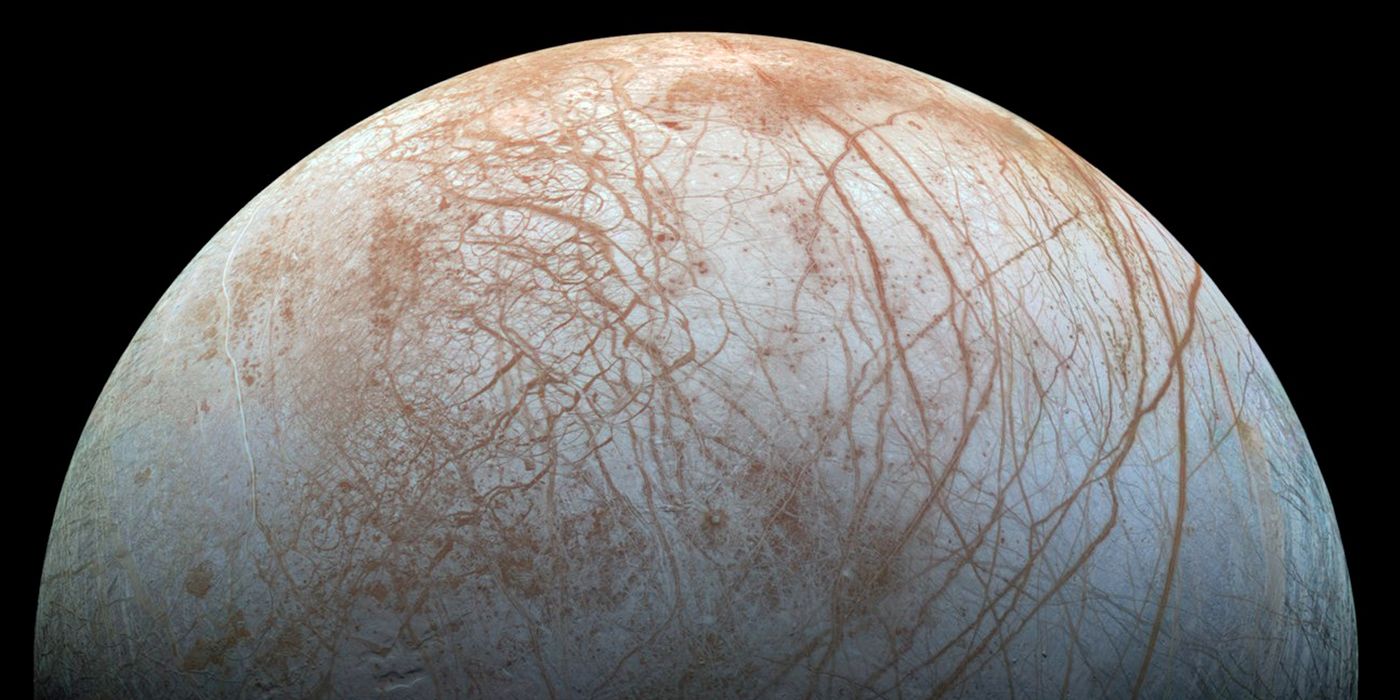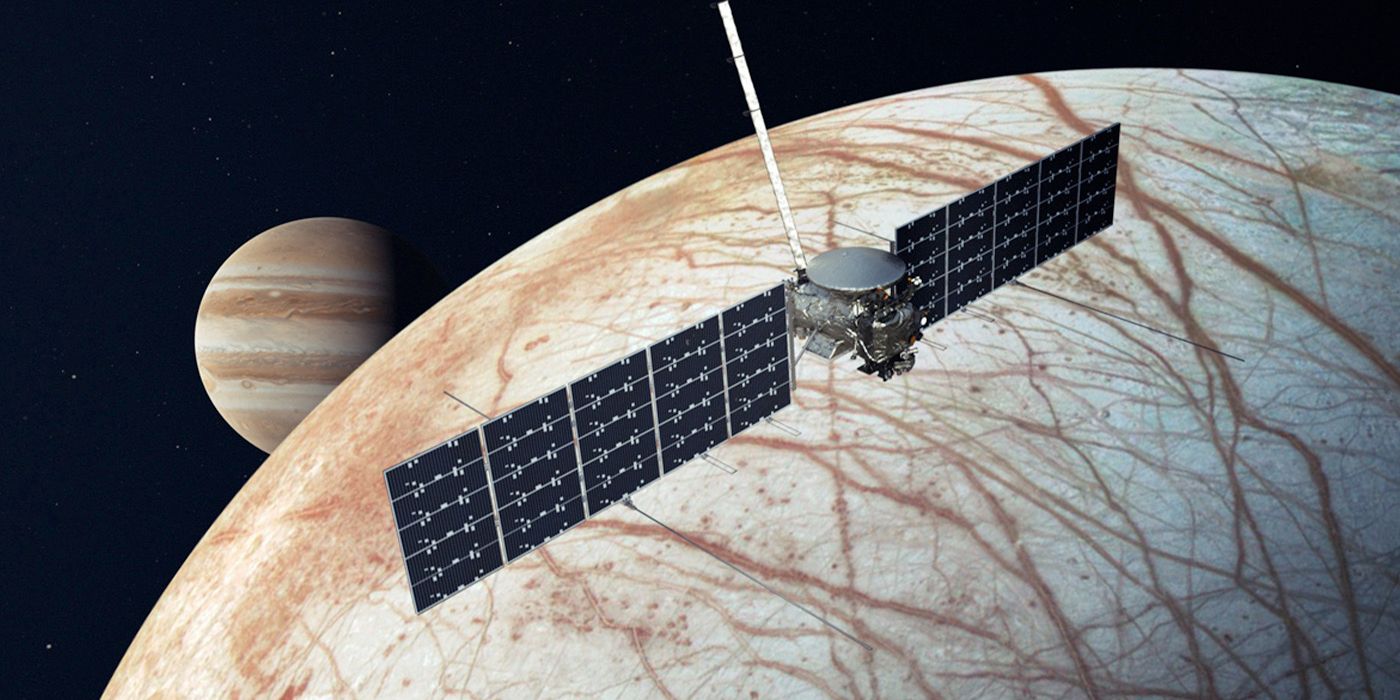If there are extraterrestrial life forms hiding away beneath the icy crust of Jupiter's moon Europa, they're being protected from some of the most intense conditions space can throw at them, according to a new NASA-funded study that aims to better characterize Europa's surface ahead of future missions. Europa, the fourth-largest moon of the mighty gas giant Jupiter, is an increasingly interesting target for researchers searching for life in the cosmos, and new data reveals that the moon's thick shell of ice could protect its inhabitants from deadly phenomena like asteroid impacts and devastating cosmic radiation.
Europa was once thought to be little more than a solid ball of ice. From a distance, the frosty moon appears lifeless and dead, but missions to Jupiter that caught closer glimpses of Europa revealed that it might be hiding something. As scientists got a better grasp on how tidal forces can affect a water world like Europa they came to understand that the pull of Jupiter's gravity is enough to keep the liquid water inside the moon from freezing solid. It's possible that other forces are at work deep within the watery moon, and even though it would exist in utter darkness, it's possible that a vast ocean inside the icy shell harbors life.
As NASA's Jet Propulsion Laboratory explains in a new post, new research funded by NASA is helping to reveal what the surface of Europa is really like. In addition to massive fissures in the ice, the surface is regularly peppered by objects like asteroids and other debris. What's less obvious is the intense radiation that bombards the moon, and it has its big brother Jupiter to thank for it. NASA wants to know how deep into the icy shell the impacts and radiation reach, and if possible biosignatures from any life forms residing in the ocean beneath may be destroyed before they have a chance to be discovered and studied.
Tending The Garden
NASA's Europa Clipper mission is expected to launch in late 2024. The spacecraft will travel to Jupiter and enter the planet's orbit, but its primary target will be Europa itself. It will perform a sequence of flybys past Europa and gather vital information about the moon as it passes. It won't land on Europa, but it should be able to learn a great deal about the icy world anyway. The big question for most of us is whether it'll be able to suss out anything about the moon's potential to host life.
If there is indeed life beneath the ice of Europa — whether it's an ocean of microbes or more complex organisms — clues to its existence likely find their way into the ice layer on a regular basis. Like ice covering a body of water on Earth, the churn of the ice would happen slowly, but it's possible that biosignatures could find their way to the surface where they might be detected and studied by humans. That is if space doesn't destroy them first. The process of debris from space and radiation shaking things up on the surface is called "impact gardening," and before NASA launches a mission to Europa's surface, they'll need to know just how deep that garden goes.
“If we hope to find pristine, chemical biosignatures, we will have to look below the zone where impacts have been gardening,” Emily Costello, the lead author of the study, said in a statement. “Chemical biosignatures in areas shallower than that zone may have been exposed to destructive radiation.” In this way, Europa's shell of ice is a double-edged sword. On the one hand, it might be protecting aquatic life from intense radiation, impacts from debris, and other threats, but it could also prevent (or at least temporarily delay) our discovery of that life.


